By Leon Thurman, Specialist Voice Educator
Many boys are lost to singing during their voice change.1 The more we know about voice change, the greater the chances boys will grow their interest and dedication to the expressive rewards of singing. To that end, this article presents detailed information about the following topics: 1) two distinct ways to gather knowledge about boys’ changing voices; 2) two exemplar voice classification methods that have grown out of those knowledge-gathering methods; 3) research evidence from sources other than choral singing research, which deepens our knowledge about boys’ pubertal voice change; and 4) the need for choral conductors to make a decision about the validity and reliability of voice classification guidelines for use in choral education.
To Start
All 10 to 16 year-old boys experience two discrete but interactive developmental processes: puberty and adolescence.2 Those terms are commonly used as though they refer to the same growing-up processes. They do not.
Puberty refers to the physiological and anatomical processes that confer capabilities for sexual reproduction and early capabilities for independent life.3 Typically, these processes can begin anytime between the ages of 10 to 16 years, from late elementary school through early high school. Pubertal processes occur in several growth-to-stabilization phases over a period of about one to two years or more in all normally developing males.4
Adolescence is a period of considerable neurobiological development and psychosocial adaptation.5 The onset of puberty marks the beginning of adolescence and when it is complete, that period is referred to as early adolescence. Middle adolescence typically extends to the age of 18 years, and late adolescence extends to about the age of 21.6 Adolescence is considerably influenced by: 1) the capability for sexual desire and reproduction, and 2) the concomitant body and brain growth spurts that confer remarkable increases in physical, cognitive, emotional, and social capabilities.7

Gathering Knowledge
The voices of male human beings are considerably influenced by all of the above growth and adaptation processes, but this article will address only pubertal influences. So, the first question is: How can we “know” about what happens to young boys’ voices during puberty? That question begs a second: What are the most valuable ways to devise teaching practices that help those boys convert their emerging vocal capabilities into expressive vocal abilities so that they can choose to sing throughout their lives. There are two ways we can “know.”
First way. We can visually observe and listen to a large number of 10 to 16 year old boys when they: 1) sing selected pitch patterns and/or musical excerpts in a variety of pitch ranges, volume levels, and rhythmic speeds (vocal agility); and 2) talk spontaneously, without conscious awareness of how they are talking. Audio and/or video recordings of the boys’ singing and talking can be made in order to aid the analysis of this information.
Individual boys can be tracked visually and aurally during each of their 10 to 16 years, and experienced observers can detect patterns in what they hear the boys’ voices do when they sing and talk. The detected patterns, then, can be written down and associated with their chronological ages, growth patterns, and with their descriptions of past experiences with singing and speaking. Based on those observations, interpretations can be articulated about the boys’ vocal pitch ranges, volume levels, and rhythmic speed capabilities as they proceed through their pubertal growth spurts and adolescent “settling.”
In this first way of developing knowledge about 10 to 16 year old boys’ voices, perceptions and interpretations by observers are completely subjective. With no objective measures of data, the validity and reliability of their observations are open to serious question.
Second way. Using the best available digital recording equipment, we can make video and/or audio recordings of large numbers of 10 to 16 year old boys as they sing and speak in a variety of pitch ranges/patterns, volume levels, and rhythmic speeds. Using laryngeal videostroboscopic equipment, video recordings of each boy’s vocal folds also can be made, and other individual information can be recorded, e.g., age, height, body mass index, past singing experience, private voice education, and so on.
We can then use various calibrated measuring instruments that can detect detailed movement features that occur when the boys are singing/speaking, detect detailed acoustic features that are embedded within the sound of boys’ recorded voices, and then produce visual representations of those detailed features for deeper study. The resulting graphic representations can categorize such details as:
- Fundamental frequencies of vibration (pitch) that the boys’ vocal folds produced when the recordings were made;
- Vocal sound spectra (fundamental frequencies, overtones, and their intensities) that were first produced by the vibrating vocal folds, then modified by shaping the vocal tract, then emitted from the oral/nasal cavities as sound waves; and
- Progressive time durations of the vocal sound spectra.
One graphic representation that some measuring instruments can produce is called a spectrogram (see SidePanel 3 for samples). Expert analysts can observe spectrograms of a boy’s vocal tasks and relate it to his personal information and history (age, height, etc.) while listening to the recordings from which the spectrograms were made. After all the data from multiple boys have been reviewed analysts can: 1) detect patterns and produce mathematical descriptions of that information; 2) articulate comparative, evidence-based knowledge about how the pubertal growth phases affected vocal capability changes in the boys’ voices; and 3) develop concepts, terminologies, and teaching practices that are aligned with the evidence. This, then, relates to processes of vocal pedagogy, repertoire selection, and part assignments for boys progressing through their pubertal voice changes.
The above evidence-to-practice sequence is patterned after the evidence-to-practice processes that are used in all of the science-based professions such as medicine, neuropsychology, speech pathology, audiology, and physical therapy.
Two Exemplar Systems for Classifying Boys’ Voices during Puberty
Especially in the United States, two exemplar systems are currently used for classifying boys’ voices during puberty. One system was originated by Irvin Cooper and the other by one of his graduate students, John Cooksey.
The Cooper System
Cooper was Professor of Music at Florida State University from 1950 to 1970. He is most widely known as a pioneer in the development of integrated concepts, terminologies, and practical methods for teaching changing male voices in choral settings. In 1965, Cooper published his ideas, including his system of voice classification, in Teaching Junior High School Music: General Music and the Vocal Program.8 The Director of the School of Music at Florida State, Karl O. Kuersteiner, was co-author. A second edition was published in 1970, about one year before Dr. Cooper’s death.9
Cooper was born in the United Kingdom and earned his baccalaureate degree from the University of Manchester. He then moved to Montreal, Quebec, Canada, where he began teaching vocal and instrumental music in Montreal’s public schools. Eventually, he became Supervisor of Music for all of Montreal’s schools, earned his doctorate at McGill University, and was added to its faculty.10
During his time in Montreal, Cooper noted that most of the boys in the middle grades were assigned to a study period when nearly everyone else was studying instrumental and/or vocal music. This observation ignited his curiosity and led him to investigate why these boys were not singing. That was the beginning of his life-long devotion to creating ways that singing abilities could be learned and continued successfully by boys who were experiencing puberty.11
By working with individual boys of that age, and listening to them closely, he determined that they were capable of singing quite successfully throughout their pubertal growth period. And, he determined that their pubertal growth changed the pitch ranges in which they could sing with physical ease and pleasing tone quality. A primary reason why they had stopped singing during this time was that they were being asked to sing vocal lines that did not match the pitch ranges in which they were capable of singing successfully.12
Cooper set about determining those pitch ranges in which boys could sing successfully as they progressed through their pubertal growth. His approach pinpointed vocal problems that boys had during their junior high school ages (12 through 15 years). Eventually, he created what came to be known as the Cambiata Plan for categorizing voices. The term Cambiata is a form of the Italian transitive verb cambiare (to change). Cooper was familiar with the music theory term cambiata nota (changing note) and adapted it to cambiata voce (changing voice).13
Over his lifetime, Cooper evaluated the singing of over 114,000 boys who were about to begin puberty, were experiencing puberty, and had completed puberty. Cooper took into account boys’ capable high-and-low pitch ranges, the pitch ranges in which they sang most comfortably with their best vocal tone and least vocal fatigue (tessiturae), and the pitch levels in which there were audible shifts of tonal qualities or register transitions. Based on those determinations, the boys were assigned to sing particular vocal parts in choral music. In addition, he evolved a method for composing and arranging choral music for this age group that is distinguishable from the standard SATB, SAB, TTBB, and TTB voicings. A Cambiata or ‘C’ vocal part was substituted for traditional tenor parts, so that arrangements and compositions that use his method could be written for SACB, SAC, CCBB, or CCB voicings. In the 1950s and 1960s, Cooper composed, arranged, and distributed a large literature of choral music that was used throughout the country.14
In 1972, Don Collins, a former masters and doctoral student of Cooper’s at Florida State, established Cambiata Press, Inc. and located the company in Conway, Arkansas where he was on the choral music faculty at Central Arkansas University. Collins later founded an educational nonprofit corporation, Cambiata Vocal Music Institute of America, through which workshops and other educational services were offered to choral music educators.15 In 1981, Collins authored The Cambiata Concept, a book that elaborated “…a comprehensive philosophy and methodology of teaching choral music to adolescents.”16
Collins retired in 2009, the Institute was transferred to the College of Music at the University of North Texas, and the name was changed to The Cambiata Vocal Institute of America for Early Vocal Music Education. The current Executive Director is Alan McClung.
Cooper’s Cambiata Plan included two categories for boys who were experiencing pubertal voice change. Boys in the first phase of voice change were categorized as Cambiata voices, and boys who were in the second phase were categorized as Baritone voices (see SidePanel 1). Unchanged boys’ voices were referred to as Sopranos. Boys who had completed voice change were called Basses. In rehearsal and performance, all of the boys were located in front of the girls.17
The Cooksey System
John Cooksey18 completed his Masters degree in choral music education at Florida State University where he studied with Cooper. He also taught junior high choirs for seven years in the Tampa Public Schools in Florida where he applied Cooper’s Cambiata Plan. During his time there, he began to observe several characteristics of boys’ changing voices that raised questions about some aspects of the Cambiata Plan. As a result, he began to adapt the Cambiata Plan according to his own perceptual experiences and decided that a scientific study of boys’ changing voices was needed.
After teaching in Tampa, Cooksey was admitted to the Doctor of Education program in choral music education at the University of Illinois. While there, as a student of Richard Colwell, he was schooled in the use of the scientific method for experimental research in music education. Cooksey later joined the music faculty at California State University in Fullerton where he became allied with two speech pathology professors who were interested in voices: Ralph Beckett and Richard Wiseman. Together, the team designed and conducted a three-year scientific study of male adolescents who were experiencing pubertal voice change. Before the study’s data collection had begun, however, Cooksey wrote a series of four theoretical articles about male voice change that were published in four consecutive issues of Choral Journal.19 One of these articles included his pre-study voice classification guidelines.
Data collection for the Cooksey-Beckett-Wiseman study began in September, 1979. The study’s subjects were 86 seventh-grade boys from the Orange County Unified School District. Some were enrolled in choirs; most were not. During each month of their academic years as seventh, eighth, and ninth graders (totaling 27 months), 23 items of data were recorded from each boy (no data during the summer months).20 This resulted in 621 pieces of data for each boy. With 86 boys in the study, there were 53,406 data items collected during the entire study.
Each month, an audiotape recording was made of each boy performing pre-selected vocal tasks. The following list is the sequential order in which the tasks were performed and recorded. Each boy:
- Counted backwards from 20 to 1, and in doing so, their conscious awareness was focused on saying the unfamiliar sequence of numbers accurately. The neural networks that operate the vocal folds, then, typically settled them into vibrating around a particular pitch area. A temporary Average Speaking Fundamental Frequency (ASF0; abbreviation for fundamental frequency is F0). was determined when the data gatherer hummed a perceived average pitch, located it on a piano keyboard, and hand-recorded it.
- Began on the temporary ASF0, and sang the pitches of an ascending major scale (vowel /ah/). They continued to do so to the highest pitch they could produce well. Then, they began on a self-chosen upper pitch and sang a descending major scale on /ah/ to the lowest pitch they could produce well. Any highest/lowest pitch that was produced with audibly perceived effort, strain, and/or “fading down” was not included in their total pitch range compass for the study.
- Sustained a pitch for several seconds in lower register (called modal), another pitch in upper register (called head), and a third pitch in falsetto register when possible.
After three years, 27 audio recordings had been made of each boy for a grand total of 2,322 recordings to be objectively analyzed. How were they analyzed?
- The recordings of each boy’s speaking sample were played into a voice analysis computer program to obtain an objective measure of their ASF0. As each boy passed into each phase of voice change, their ASF0 was above their lowest successful sung pitch by about a minor or major third (3 to 4 half steps).
- The sung pitch scales revealed that some boys had a “blank spot” in the middle area of their pitch range in which they could not produce vocal sound. These occurred almost entirely when the boys were in the Newvoice classification (see SidePanel #2).
- The recordings of each boy’s sustained pitches were played into electronic voice analysis equipment that performed objective spectral analyses that included fundamental frequency/pitch, harmonic/partial frequencies above the fundamental to about 4,100-Hertz (vibratory cycles per second), and the intensity levels of all such frequencies. Following each analysis, a spectrogram was printed for examination and comparisons by the investigators. Over 6,500 spectrograms were printed (see SidePanel #3).
- Each boy’s 27 printed spectrograms were sequenced by date of recording and examined for visually detected spectral pattern changes.
- Based on the study’s objectively measured evidence, Cooksey, Becket, and Wiseman agreed that the pitch and tessitura ranges shown in SidePanel #2 reflected average ranges for all the boys who were experiencing each of the phases of pubertal voice change.
Currently, only one printed source presents all the relevant details of the Cooksey-Beckett-Wiseman study.21 Cooksey presents sessions on male and female pubertal voice change every summer at a course presented by The VoiceCare Network.22
Puberty and Male Voice Change: Relevant Scientific Details
Although the onset age of puberty is highly variable, for most boys it happens sometime between the ages of 12 or 13 years.23 [Latin: pubesco, pubescere = active process of becoming adult (reproductive capability); pubertas = adulthood, implied presence of pubic and facial hair]. The pubertal process begins when genes in a part of the brain (the hypothalamus) trigger the production of gonadotropin-releasing hormone (GnRH) [formerly known as luteinizing hormone-releasing hormone (LH-RH)].24 GnRH then flows onto its receptors in the pituitary body and that triggers the production and release into the bloodstream of several gonadotrophins [Greek: gone = seed; trophe = nourishment] such as luteinizing hormone (LH) and follicle stimulating hormone (FSH).25 These two hormones circulate to their receptors located within the two male testes, and that triggers the production of sperm and the production and circulation of the androgenic [Greek: andros = male; genein = to produce] steroid hormone, testosterone (T).26 T has several growth triggering effects throughout the body, including increased muscle mass, growth of pubic and facial hair, and voice change.27 Voice change, facial hair, and pubic hair are the clearest landmarks of puberty in males.28
Human physical growth follows a two-phase pattern: a saltation phase [Latin: saltatio = a leap], and a stasis phase [Greek: stasis = state of equilibrium].29 The whole of pubertal growth occurs in a variety of shorter growth-to-settling episodes that last multiple weeks to multiple months. These episodes occur sequentially within various anatomical areas of the body, but the start-up time and the duration of each phase is different in each individual.30 For instance, the end-areas of the body’s four limbs grow larger first (hands and feet), and then the bones and soft tissues of the arms and legs grow longer and larger. Increases in glove and shoe sizes, therefore, “announce” increases in general clothes sizes. James Tanner, a British pediatrician, devised a five-stage evaluative scale of genital development in males that are used today, enabling pediatricians to assess normal versus abnormal pubertal development.31
Growth and reshaping of lung size, and thus breath or vital capacity, are among the voice effects of pubertal development.32 Cooksey found that vital lung capacity increased with each phase of voice change, implying physiological growth of the whole chest, and that increased vital capacity could be used as a predictor of the voice change phases.33 Engaging in increased respiratory activity, such as is required for singing, also increases lung size and vital capacity.34 Comparatively lower demand results in less growth in lung size and vital capacity.
The vocal folds are made up of three types of tissues.35 First, the core of each vocal fold is made up of the vocalis portion of its thyroarytenoid (TA) muscle. The TA muscles have a primary shortening influence on the vocal folds, and are sometimes referred to as the “body” of the vocal folds. Second, connected to and extending from each vocalis is the non-muscular, “soft tissue” of the deep, intermediate, and superficial layers of the vocal folds’ lamina propria [Latin: lamina = thin layers; proprius = particular, unique]. The deep layer is dense with thread-like collagen fibers. The intermediate layer has less and less collagen and more and more of such fibers as elastin. The deep and intermediate layers form what is called the vocal ligament. The healthy superficial layer is more fluid-like and highly compliant, similar to uncongealed gelatin.36 It is constituted mostly of elastin, hyaluronic acid, capillaries, and other constituents. Third, the cells of the epithelium (skin) basically hold everything together. Their outer surfaces are where the effects of impact and shear stresses start during vocal fold vibration. The lamina propria and the epithelium are sometimes referred to as the “cover tissues” of the vocal folds.37
Inside the male thyroid cartilage, vocal fold length from prepuberty to postpuberty may increase by about 67% (see Table 1). Pubertal maturation of laryngeal anatomy includes growth of all its muscle and non-muscle tissues.38 During pubertal growth, layer definition in the lamina propria is accelerated to clearly identify the superficial and intermediate layers, with the intermediate and deep layers forming a now-mature vocal ligament. Essential adult characteristics of the lamina propria are formed by at least age 16.39
|
Table 1 Mean male and female total vocal fold length (in millimeters) from prepuberty through puberty. [Data from Kahane, 1983. Used with permission.] |
||||
Prepuberty |
Puberty |
Growth |
Percent Increase |
|
Male |
17.35 | 28.92 | 11.57 | 66.68 |
Female |
17.31 | 21.47 | 4.16 | 23.97 |
Also during pubertal growth spurts, male laryngeal cartilages become observably larger and heavier.40 The most significant proportional change of male cartilage dimension is in the front-to-back dimension of the upper area of the largest cartilage, the thyroid. That dimension in the male thyroid cartilage undergoes about three times more horizontal growth than the same dimension in females (15.04-mm compared to 4.47-mm). That lengthened area in the male thyroid cartilage forms what is commonly called the “Adam’s apple.”
|
Scaled comparison of prepubertal male thyroid cartilage with postpubertal male thyroid cartilage. [Data from Kahane, 1978. Used with permission.] |
The vocal tract is basically a tube made up of the throat and mouth—the voice-resonating areas.41 During and following puberty, the average length of male vocal tracts increases, becoming significantly longer and developing greater circumference. Full adult dimensions are completed by ages 20 or 21. The vocal tract growth results in amplification of the lower partials of the vocal spectra, thus adding a “fullness” component to perceived voice quality.
One indicator of vocal tract length is the location of the lowest part of the larynx (cricoid cartilage) relative to the cervical vertebrae of the spinal column.42 In infants, that lowest border of the larynx is located near the lower border of the third cervical vertebra (C3). By age 5 years, under normal growth processes, the low border of the male larynx is located near the middle of C5, near the upper/middle of C6 by 10 years, and near the low area of C6 at the end of puberty. By about age 20 years, the lowest border of the male larynx is located near the upper area of C7. Further downward settling may occur, but the bottom of the larynx remains within the C7 region in males throughout life.
Puberty and Male Voice Change: From Science to Practice
In June 1984, at the Voice Foundation’s annual voice symposium, Cooksey presented a research investigation that he had completed with the assistance of Joel Kahane, a renowned vocal anatomist.43 The study further solidified the results of the earlier California longitudinal study by Cooksey-Beckett-Wiseman. In 1984, Mitzi Groom published the results of her doctoral dissertation in the proceedings of a research symposium on male adolescent voices. She found evidence that voice change phases accelerated in warmer climates, including the summer months in the United States.44 In 1985, Joanne Rutkowski, now Professor of Music Education at Pennsylvania State University, published the results of a study that tested and validated the Cooksey guidelines for classifying male pubertal voice change.45
Cooksey’s 1984 presentation at the Voice Foundation symposium was one of four sessions about what voice education within school music education was like or could be like. A panel discussion followed and included the four presenters, prominent laryngologists Robert Sataloff and Friedrich Brodnitz, and the founder of the Voice Foundation, James Gould. Brodnitz had previously, and rather famously, contended that boys who were experiencing puberty should not be allowed to sing.46 Yet, upon reviewing the scientific evidence, Brodnitz declared that if music educators and choral conductors followed the results of Dr. Cooksey’s research, then boys could safely sing during puberty. Research could therefore inform the pedagogy of choral music for boys with changing voices.47

Cooksey spent a sabbatical year from 1992 to 1993 in the United Kingdom, hosted by renowned child-voice researcher Graham Welch. A one-year study of boy singers in the London Oratory School and Primary School was undertaken and the results were published.48 Again, the validity and reliability of the Cooksey guidelines were confirmed.
A few years later, the Welsh pediatrician, Meredydd Harries and his colleagues investigated whether or not there was a correlation between Tanner’s five stages of genital growth in pubertal males (G1—G5) and the six phases of voice change in Cooksey’s guidelines (C1—C6).49 Twenty-six non-chorister schoolboys, aged 13 to 14 years, were assessed on five occasions at three-month intervals over one year. Both the Tanner and Cooksey classification guidelines were followed and various data were collected such as salivary testosterone profile, electrolaryngographs, and analyses of recorded speech and singing episodes. The final report concluded with, “This study shows a good correlation between the G and C methods of staging and confirms the Cooksey system as valid for monitoring an individual subject longitudinally through puberty.”50
In 1994, results of a 5-year longitudinal investigation of male adolescent voice change were published.51 The study was funded by one of the institutes of the U.S. National Institutes of Health and described effects of voice change on speech (no sung pitches were studied). Forty-eight male subjects were 10.5- to 11.5-years-old at the study’s beginning and 15.5- and 16.5-years old at the end. The most relevant objective measurements were speaking fundamental frequency (SF0) and phonational frequency range (PFR). Standard spoken passages were read to determine SF0 and pitch sliding was used to determine PFR. Based on the then-current state of knowledge about voice change in the speech sciences, the authors determined that stable adolescent voice change measurements could be obtained, the related vocal changes appeared in predictable patterns, and both the onset and duration of voice change extended over a longer period of time than had been previously thought.
Much more recently, Harry Hollien reviewed a wide array of anatomical, physiological, and practical application studies about male pubertal voice change.52 Included were the 5-year study mentioned above and special mention of the Cooksey-Beckett-Wiseman research. Hollien concluded that correlations between the course of general pubertal growth and changes in spoken and sung fundamental frequency (F0) range were valid measures of what he called adolescent voice change (AVC). He proposed a model of AVC in which plots of the spoken or sung F0 change parameter could define AVC, including its start, extent, and completion.
A significant challenge to voice educators and voice scientists has been the presence of phonation gaps (no vocal sound) within adolescent boys’ singing ranges—what Cooksey referred to as “blank spots.” In 2008, Elizabeth Willis and Dianna Kenny, assisted by Graham Welch, took up that challenge and published some unique and valuable findings.53 Over one year, they studied relationships between phonational gaps, body weight, and SF0 in 18 boys who were completing year seven at two secondary schools in Sydney, Australia. The average age of the boys was just under 13 years at the beginning of the study. Over the year, objective physical and acoustic measures were gathered during five data-gathering visits.
Willis and Kenny confirmed Cooksey’s “blank spot” gap in phonation, clarifying that it almost always occurred toward the second half of the voice change process, beginning around the transition between Midvoice IIA and Newvoice. They gathered data by using more sophisticated voice analysis instruments than were available to Cooksey in the early 1980s. The male singers were recorded performing six vocal glides (glissandi). Three of them descended from subjects’ uppermost phonational frequency range (PFR) to lowest PFR, and three ascended from subjects’ lowest PFR to their highest, thus exposing any gaps that were present. There were three major findings.
First, in those boys who experienced phonational gaps during the glides, the gaps extended over a wider pitch range than was found by Cooksey, and some boys had a series of up to three gaps that changed in phonational range (pitch range) over time. The first of these started with gaps that were below the boys’ SF0 (average range A2 to D3), then later changed to an upper pitch range gap (E5 to F5), before becoming a mid-range gap (C4 to G4). Some of the gaps included pitches that Cooksey had found could be easily sung and some of the mid-range gaps lasted longer than Cooksey had indicated.
Second, the researchers were interested in related research findings that males typically gained weight during the second half of early adolescence.54 The researchers wondered if there was a correlation between this weight gain and the phonational blank spots that signaled the second half of the voice change process. Indeed, at the end of the study when the boys’ average age was nearly 14 years, all boys heavier than 54.8 kg (120.8 lbs) had gaps that averaged from D#4 to G#4.
Third, Willis and Kenny indicated that no voice education method could overcome phonational gaps, but they expressed no opposition to Cooksey’s recommended use of slow downward sigh-glides to assist in the transition toward full-range singing and disappearance of the gaps. The authors recommended more research into all of their findings.
Boys Choose to Sing because They Can
Irvin Cooper and John Cooksey dedicated considerable time and energy in their lives to helping adolescent boys know that their voices—over their entire lives—are capable of skilled singing. And, that each of them is a human being who is capable of speaking and singing (and moving) expressively from the heart, with rich empathy for their fellow human beings.
On one wall of the choral music room, a middle school teacher who used Cooksey’s voice classification guidelines, placed a horizontal row of six printed placards across the top. The placards named each of the Cooksey classification labels, i.e., Unchanged, Midvoice I, etc. On the left end of that wall, placards were placed top-to-bottom on which the name of each boy in the school choral program was printed. The same was done on another wall for the girls in the program.
On a selected day, meeting only with the boys, the choral teacher explained, in simple terms, about voice change, its growth spurts, and the changes of vocal capability that accompanied them. Using the choir room piano and older, more experienced boys, he showed them all how to classify their own voices. When the boys thought they had changed to the next category, they were to tell the choir teacher and the teacher would confirm or disconfirm the boy’s decision. If confirmed, the boy would move his name under his new voice change category in the current or next rehearsal.
Those conversations were made possible because of the teacher’s knowledge of the physiology of voice change and awareness of adolescent social and cognitive development. The boys were engaged as musicians, aware of their present capabilities, and eager to move toward the next singing experience. Vocal transformation had enabled musical transformation.
As it should be.
NOTES
1 Patrick K. Freer, “Two Decades of Research on Possible Selves and the ‘Missing Males’ Problem in Choral Music,” International Journal of Music Education 28, no. 1 (2010): 17-30.
2 Cheryl L. Sisk and Douglas L. Foster, “The Neural Basis of Puberty and Adolescence.” Nature Neuroscience 7, no. 9 (2004): 1040-1047.
3 Ibid.
4 Harry Hollien, Rachel Green, and Karen Massey, “Longitudinal Research on Adolescent Voice Change in Males.” Journal of the Acoustical Society of America 96, no. 5 (1994): 2646-2654.
5 Sisk and Foster, “Neural Basis of Puberty and Adolescence.”
6 Leon Thurman and Carol A. Klitzke, “Voice Education and Health Care for Young Voices.” In Vocal Arts Medicine: The Care and Prevention of Professional Voice Disorders, ed. Michael S. Benninger, Barbara H. Jacobson, and Alex F. Johnson, 226-268. New York: Thieme Medical Publishers, 1994.
7 Stephanie Burnett and Sarah-Jayne Blakemore, “The Development of Adolescent Social Cognition.” In Values, Empathy, and Fairness across Social Barriers, ed. Scott Atran, Arcadi Navarro, Kevin Ochsner, Adolf Tobeña and Oscar Vilarroya, 1167, 51-56. New York: Annals of the New York Academy of Sciences, 2009; Kurt W. Fischer and Samuel P. Rose, “Dynamic Growth Cycles of Brain and Cognitive Development.” In Developmental Neuroimaging: Mapping the Development of Brain and Behavior, ed. by Robert W. Thatcher, G. Reid Lyon, J. Rumsey and N. Krasnegor, 263-279. New York: Academic Press, 1996; Sisk and Foster, “Neural Basis of Puberty and Adolescence.”
8 Irvin Cooper and Karl O. Kuersteiner, Teaching Junior High School Music: General Music and the Vocal Program. (Boston: Allyn and Bacon 1965).
9 Irvin Cooper and Karl O. Kuersteiner, Teaching Junior High School Music: General Music and the Vocal Program, 2nd ed. (Boston: Allyn and Bacon 1970).
10 Don L. Collins, Teaching Choral Music, 2nd ed. (Upper Saddle River, NJ: Prentice Hall, 1999) 128, 129.
11 Ibid.
12 Ibid.
13 Ibid.
14 Cooper and Kuersteiner, 1970, 18-21; Collins, Teaching Choral Music, 132, 133.
15 Collins, Teaching Choral Music, 133, 134.
16 Don L. Collins, The Cambiata Concept: A Comprehensive Philosophy and Methodology of Teaching Music to Adolescents. Conway, AR: Cambiata Press, 1981.
17 Collins, Teaching Choral Music, 132.
18 Biographical information for Dr. Cooksey was obtained in a personal telephone interview, January 15, 2012.
19 John M. Cooksey, “The Development of Contemporary, Eclectic Theory for the Training and Cultivation of the Junior High School Male Changing Voice,” Part I: “Existing Theories,” Part II: “Scientific and Empirical Findings: Some Tentative Solutions,” Part III: “Developing an Integrated Approach to the Care and Training of the Junior High School Male Changing Voice,” and Part IV: “Selecting Music for the Junior High School Male Changing Voice.” Choral Journal, 18 no. 2 (1977): 5-14; 18 no. 3 (1977): 5-16; 18 no. 4 (1977): 5-15; 18 no. 5 (1978): 5-18.
20 All of the information about the Cooksey-Beckett-Wiseman study is from two sources: John Cooksey, “Voice Transformation in Male Adolescents” and “Male Adolescent Transforming Voices: Voice Classification, Voice Skill Development, and Music Literature Selection.” In Bodymind and Voice: Foundations of Voice Education, ed. Leon Thurman and Graham Welch, 718-738 and 821-841. Collegeville, MN: VoiceCare Network and National Center for Voice and Speech, 2000; personal telephone interview, January 15, 2012.
21 Leon Thurman and Graham Welch, Bodymind and Voice: Foundations of Voice Education, rev. ed., 3 volumes. (Collegeville, MN: VoiceCare Network and National Center for Voice and Speech, 2000).
22 Information about Bodymind and Voice and the summer courses in which Dr. Cooksey teaches can be found at www.voicecarenetwork.org
23 Harry Hollien, “On Pubescent Voice Change in Males.” Journal of Voice, (in press).
24 Melvin M. Grumbach, “The Neuroendocrinology of Human Puberty Revisited.” Hormone Research 57, no. Suppl. 2 (2002): 2-14.
25 Leo Dunkel, Henrik Alfthan, Ulf-Hoakan Stenman, Päivi Tapanainen, and Jaakko Perheentupa. “Pulsatile Secretion of LH and FSH in Prepubertal and Early Pubertal Boys Revealed by Ultrasensitive Time-Resolved Immunoflourometric Assays.” Pediatric Research 27, no. 3 (1990): 215-219.
26 C. Thøger Nielsen, Niels E. Skakkebæk, Janet A.B. Darling, William M. Hunter, David W. Richardson, Merete Jørgenson, and Niels Keiding. “Longitudinal Study of Testosterone and Luteinizing Hormone (LH) in Relation to Spermarche, Pubic Hair, Height and Sitting Height in Normal Boys.” Acta Endocrinologica Supplementum (Copenhagen) Supplement, (1986): 98-106.
27 Peter A. Lee and Claude J. Migeon. “Puberty in Boys: Correlation of Serum Levels of Gonadotropins (LH, FSH), Androgens (Testosterone, Androstenedione, Dehydroepiandrosterone and Its Sulfate), Estrogens (Estrone and Estradiol), and Progestins (Progesterone, 17-Hydroxy-Progesterone).” Journal of Clinical Endocrinology and Metabolism 41, (1975): 556-562.
28 James M. Tanner, “Sequence, Tempo, and Individual Variation in Growth and Development of Boys and Girls Aged Twelve to Sixteen.” In Twelve to Sixteen: Early Adolescence, edited by Jerome Kagen and R. Coles. New York: W.W. Norton, 1972; C.Thøger Nielsen, et al., “Longitudinal Study of Testosterone and Luteinizing Hormone (LH);” Deso A. Weiss, “The Pubertal Change of the Human Voice (Mutation).” Folia Foniatrica 2, no. 3 (1950): 126-159.
29 Manfred Lampl, Johannes D. Veldhuis, and Mark L. Johnson. “Saltation and Stasis: A Model of Human Growth.” Science 258, (1993): 801-803.
30 Nielsen, et al., “Longitudinal Study of Testosterone and Luteinizing Hormone (LH);” Johanna M.B. Wennick, Henriette A. Delemarre-Van de Waal, Herman Van Kessel, Gerhard H. Mulder, J. Peter Foster, and Joop Schoemaker. “Luteinizing Hormone Secretion Patterns in Boys at the Onset of Puberty, Measured Using a Highly Sensitive Immunoradiometric Assay.” Journal of Clinical Endocrinology and Metabolism 67, (1988): 924-928; Paul M. Martha, Alan D. Rogol, Johannes D. Veldhuis, James R. Kerrigan, David W. Goodman, and Robert M. Blizzard. “Alterations in the Pulsatile Properties of Circulating Growth Hormone Concentrations During Puberty in Boys.” Journal of Clinical Endocrinology and Metabolism 69, (1989): 563-570; John M. Cooksey, Ralph L. Beckett, and Richard Wiseman. “The California Longitudinal Study of Male Adolescent Voice Maturation: An Investigation of Selected Vocal, Physiological, and Acoustical Factors Associated with Voice Maturation in the Male Adolescent Attending Junior High School.” Fullerton, California: California State University, 1985; Harry Hollien, “On Pubescent Voice Change in Males.” Journal of Voice, (in press).
31 James M. Tanner, “Sequence, Tempo, and Individual Variation in Growth and Development of Boys and Girls Aged Twelve to Sixteen.” In Twelve to Sixteen: Early Adolescence, edited by Jerome Kagen and R. Coles. New York: W.W. Norton, 1972; James M. Tanner, “Physical Growth and Development.” In Textbook of Pediatrics, edited by J.O. Forfar and G.C. Arneil, 1984.
32 Elisabeth G. Degroot, Phillip H. Quanjer, Mervyn E. Wise, and Bert C. Van Zomeren. “Changing Relationships between Stature and Lung Volumes During Puberty.” Respiration Physiology 65, no. 2 (1986): 139-153; Xiaobin Wang, Douglas W. Dockery, David Wypij, Diane R. Gold, Frank E. Speizer, James H. Ware, and Benjamin G. Ferris. “Pulmonary Function Growth Velocity in Children 6 to 18 Years of Age.” American Journal of Respiratory and Critical Care Medicine 148, no. 6 (1993): 1502-1508; Véronique Nève, François Girard, Antoine Flahault, and Michèle Boulé, “Lung and Thorax Development During Adolescence: Relationship with Pubertal Status.” European Respiratory Journal 20, no. 5 (2002): 1292-1298;
33 John M. Cooksey, “Voice Transformation in Male Adolescents.” In Bodymind and Voice, 729.
34 John E. Cotes, Lung Function. 4 ed. Oxford, United Kingdom: Blackwell Scientific, 1979.
35 Leon Thurman, Graham Welch, Axel Theimer, Patricia Feit, and Elizabeth Grefsheim, “WhatYour Larynx Is Made Of.” In Bodymind and Voice: Foundations of Voice Education, ed. Leon Thurman and Graham Welch, 356-366. Collegeville, MN: VoiceCare Network and National Center for Voice and Speech, 2000.
36 Statement during course instruction, Principles of Voice Production, Ingo R. Titze, Director, National Center for Voice and Speech, June, 2004.
37 Leon Thurman, et al., “What Your Larynx Is Made Of.”
38 Minoru Hirano, “Phonosurgery: Basic and Clinical Investigations.” Otologia (Fukuoka) 21(1975): 239-442; Joel Kahane, “Growth of the Human Prepubertal and Pubertal Larynx.” Journal of Speech, Language, and Hearing Science 25 (1982): 446-455.
39 Minoru Hirano, Shigejiro Kurita, Teruyuki Nakashima, “Growth, Development, and Aging of Human Vocal Folds.” In Vocal Fold Physiology: Contemporary Research and Clinical Issues, ed. Diane M. Bless, James H. Abbs, 22-43. San Diego, CA: College Hill Press, 1983.
40 Joel Kahane, “Growth of the Human Prepubertal and Pubertal Larynx;” Joel Kahane, “Postnatal Development and Aging of the Human Larynx.” Seminar in Speech and Language 4 (1983): 189-203.
41 Leon Thurman, Axel Theimer, Graham Welch, Patricia Feit, and Elizabeth Grefsheim, “What Vocal Sounds Are Made Of.” In Bodymind and Voice: Foundations of Voice Education, ed. Leon Thurman and Graham Welch, 321-325. Collegeville, MN: VoiceCare Network and National Center for Voice and Speech, 2000; Minoru Hirano, Shigejiro Kurita, Teruyuki Nakashima, “Growth, Development, and Aging of Human Vocal Folds.”
42 Joel Kahane, “Postnatal Development and Aging of the Human Larynx.” Jan Wind, On the Phylogeny and the Ontogeny of the Human Larynx: A Morphological and functional Study. Groningen, Sweden: Wolters-Noordhoff Publishing, 1970.
43 John M. Cooksey, “Vocal-Acoustical Measures of Prototypical Patterns Related to Voice Maturation in the Adolescent Male.” In Transcripts of the Thirteenth Symposium, Care of the Professional Voice, Part II: Vocal Therapeutics and Medicine, ed. Van L. Lawrence. (New York: The Voice Foundation, 1985) 469-480.
44 Mitzi Groom, “A Descriptive Analysis of Development in Adolescent Male Voices During the Summer Time Period.” In Proceedings: Research Symposium on the Male Adolescent Voice, ed E.M. Runfola, (Buffalo, New York: State University of New York at Buffalo Press, 1984) 80-85.
45 Joanne Rutkowski, “Final Results of a Longitudinal Study Investigating the Validity of Cooksey’s Theory for Training the Adolescent Voice.” Pennsylvania Music Educators Association Bulletin of Research in Music Education 16, (1985): 3-10.
46 Friedrich Brodnitz, “On the Changing Voice.” National Association of Teachers of Singing Bulletin 45, no. 2 (1983): 24-26.
47 Personal recollection as organizer and one presenter in four presentations on voice education in music education; other presenters were Anna Peter Langness and Deborah K. Lamb.
48 John M. Cooksey, “Do Adolescent Voices ‘Break’ or Do They ‘Transform’?” VOICE, The Journal of the British Voice Association 2, no. 1 (1993): 15-39; John M. Cooksey and Graham F. Welch, “Adolesence, Singing Development and National Curricula Design.” British Journal of Music Education 15, no. 1 (1998): 99-119.
49 Meredydd Lloyd Harries, Judith M. Walker, David M. Williams, Sarah M. Hawkins, and Ieuan A. Hughes, “Changes in the Male Voice at Puberty.” Archives of Disease in Children 77, (1997): 445-447.
50 Ibid.
51 Harry Hollien, Rachel Green, and Karen Massey, “Longitudinal Research on Adolescent Voice Change in Males.” Journal of the Acoustical Society of America 96, no. 5 (1994): 2646-2654.
52 Harry Hollien, “On Pubescent Voice Change in Males.” Journal of Voice, (in press).
53 Elizabeth C. Willis and Dianna T. Kenny, “Relationship between Weight, Speaking Fundamental Frequency, and the Appearance of Phonational Gaps in the Adolescent Male Changing Voice.” Journal of Voice 22, no. 4 (2008): 451-471.
54 Jody Kreiman, Bruce R. Gerratt, Gail B. Kempster, Andrew Erman, and Gerald S. Berke, “Perceptual Evaluation of Voice Quality: Review, Tutorial, and a Framework for Future Research.” Journal of Speech, Language, and Hearing Research 36, (1993): 21-40.
With the kind persmission of Choral Journal, the journal of the ACDA. The article was first published in its April 2012 issue.



![Cambiata [First phase of voice change]](http://icb.ifcm.net/wp-content/uploads/2013/07/Coop-CAMBIATA-300x261.jpg)
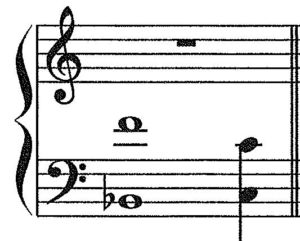
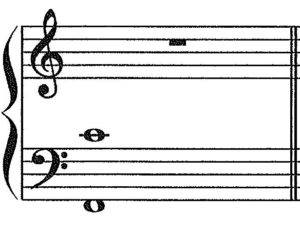


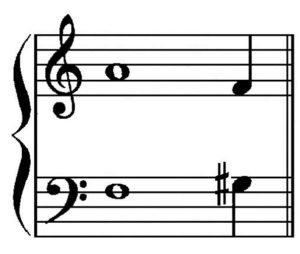
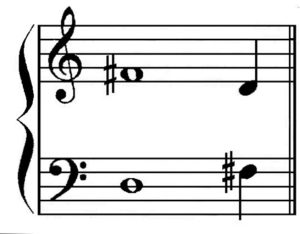
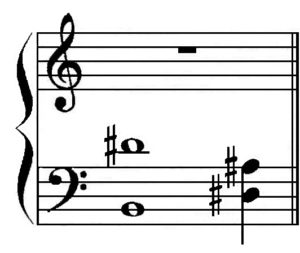
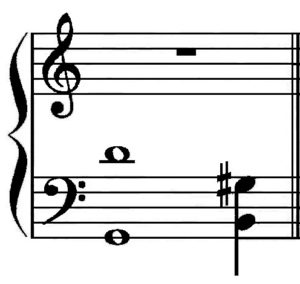
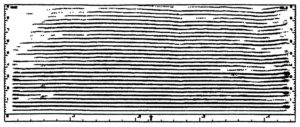


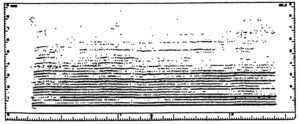
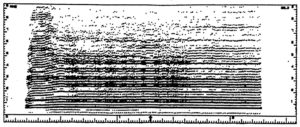
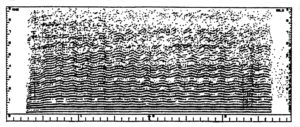
![Scaled comparison of prepubertal male thyroid cartilage with postpubertal male thyroid cartilage. [Data from Kahane, 1978. Used with permission.]](http://icb.ifcm.net/wp-content/uploads/2013/07/Article-Cartilage-Figure-1-150x150.jpg)